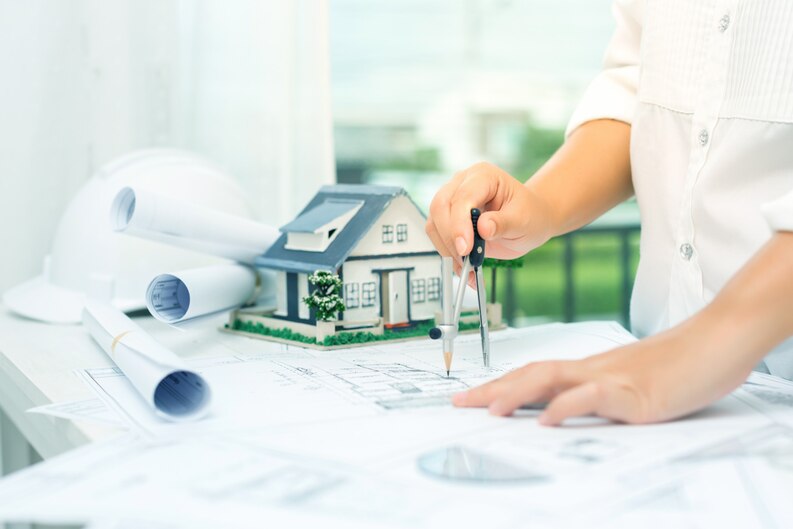As opposed to residential architecture, which typically centers on creating homes that meet individual homeowners’ needs, commercial projects involve many more considerations and requirements. To create structures that look appealing and work well for businesses and customers alike.
Commercial architecture must abide by various building codes and regulations to ensure safety and compliance, so a skilled commercial architect is essential in understanding any new requirements as they emerge.
Residential
Residential architecture is the art of designing non-commercial spaces such as homes. From penthouse apartments to single-story family houses, residential structures define how people live their daily lives – it’s therefore crucial that architects design living spaces that work for homeowners.
Residential architects must pay careful attention to safety when designing homes for prospective residents. This is especially important when working on large-scale developments like apartment complexes. Residential architects should make sure each structure remains structurally sound over time so as to avoid future tenant concerns over disrepair issues.
Many residential architects specialize in custom jobs for individual clients to design unique houses; others, however, prefer creating generic plans which builders can use on an industrial scale. Still others focus on issues like green design or creating convincing replicas of earlier architectural styles.
Residential architects of any specialty must be adept at communicating and meeting client needs. This is particularly crucial when working with clients who may have different goals for their home than what the architect is proposing. A great way to assess a potential residential architect is by gathering references and getting in touch with previous clients so you can learn about the experience working together.
Commercial
Commercial architecture blends style and function to meet the needs of businesses and organizations. This field covers a variety of building types such as offices buildings, hospitals, hospitals shopping centers factories warehouses as well as space for restaurants hotels or any hospitality venues.
Commercial projects differ significantly from residential work in that they must satisfy multiple groups – both those working within an organisation and its clients or customers. This presents unique design challenges which require expert skills and knowledge in order to produce successful outcomes.
The design process begins by meeting with clients to understand their goals and gain in-depth information about their businesses, enabling architects to produce conceptual drawings that help their client visualize the final product, which may then be modified as ideas are exchanged between parties involved.
Commercial architecture must consider both space efficiency and its environmental impacts when planning projects, with sustainability-minded materials like eco-friendly flooring or energy-saving lighting systems used in each design project. Consumers increasingly expect businesses to be conscious of their environmental footprint – an experienced architect can incorporate green technologies into the overall design in order to minimize operating costs and decrease negative impacts on Earth.
Before making your choice of commercial architect, ask to see samples of their prior work and obtain references from past clients. When calling references back up, inquire as to their experience in working with the architect as well as any responsiveness they displayed when answering queries or concerns raised by past customers.
Industrial
Industrial architecture encompasses an expansive variety of building types and designs. The style can often be distinguished by an emphasis on engineering and utility, using materials like steel and concrete with exposed functional elements such as functional corners. Industrial buildings can be found all around the world such as power plants, grain silos, distilleries, breweries or manufacturing facilities – even though many industrial buildings prioritize functionality over aesthetically pleasing interior design; great examples can often be visually impressive and even beautiful.
Commercial architects specialize in designing spaces to meet the needs of clients in various environments ranging from office buildings to retail shopping centers, using both design and engineering principles to craft spaces tailored specifically for them. They may carry out design development themselves or collaborate with a team of specialists including structural engineers, electrical and lighting engineers, interior designers and heating and ventilation engineers in creating designs which adhere to building, fire safety regulations as well as health and safety legislation.
Once dominant in the built environment, industrial architecture has since been replaced by more streamlined and contemporary office spaces, showrooms and apartment buildings. Furthermore, architects now incorporate industrial elements into residential spaces ranging from smaller urban neighborhoods to suburban homes; its popularity even led to former factories or warehouses being renovated into apartments or lofts for use as residences or restaurants.
Mixed-Use
Mixed-use architecture integrates multiple functions – including retail, office, housing and transportation–into one building or series of buildings. This strategy has become essential in our rapidly densifying cities; it saves on land costs, reduces pollution and traffic pollution levels and fosters more centralized urban growth patterns that are efficient for public transportation systems. Furthermore, mixed-use architecture fosters community by connecting people from disparate parts of the city who otherwise wouldn’t meet in commercial spaces; even making a business district that normally shuts down at night into a vibrant neighborhood 24/7!
Mix isn’t a novel concept; humans have long lived in urban settings that combined commercial, residential and cultural uses – including ancient Rome market squares where shops, apartments, administrative offices and even libraries coexisted in one structure. Unfortunately with industrialization came zoning laws that demanded that living and working spaces were separate; leading to suburban sprawl and numerous isolated buildings being constructed across cities and regions.
Today there is renewed enthusiasm for multifunctional buildings that offer more than simple tenant space. Designing successful mixed-use projects require more than simply fitting as many functions into one space; rather, successful mixed-use designs should account for each person’s individual needs while supporting one another to form an atmosphere which remains dynamic throughout the day.




